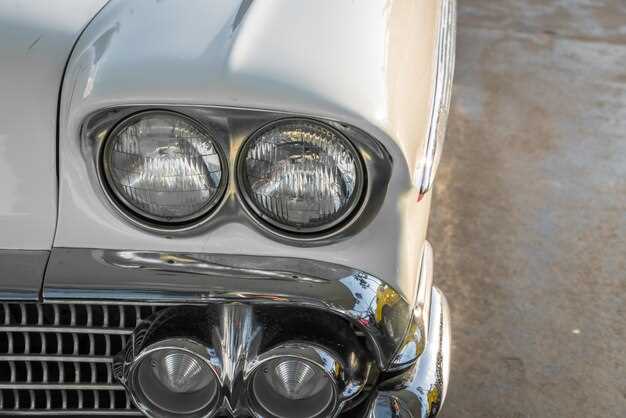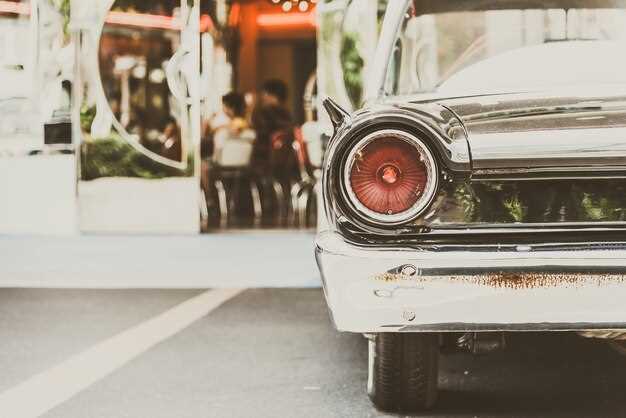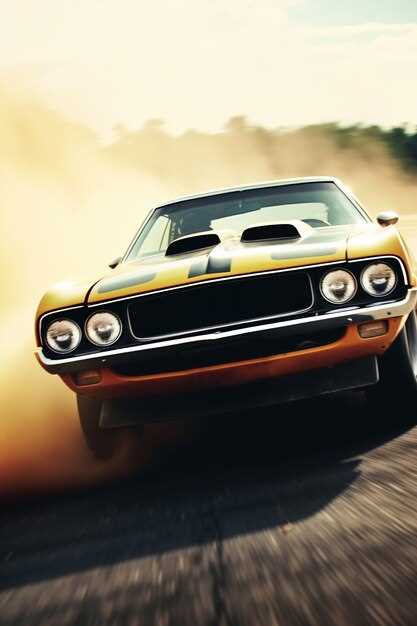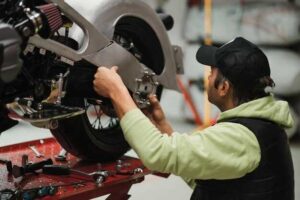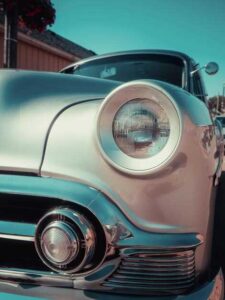Experience the thrill of muscle cars firsthand and you’ll understand why they command such a devoted following. These powerful machines combine raw horsepower with distinctive styling, evoking an emotional response that few vehicles can match.
The connection to classic American automotive culture plays a significant role in their appeal. Many enthusiasts cherish the nostalgia associated with iconic models like the Ford Mustang and Chevrolet Camaro. These cars represent a bold, rebellious spirit that resonates with generations, creating a sense of identity for their owners.
Performance remains a driving factor. Muscle cars deliver acceleration and handling that satisfies the craving for speed, making them a favorite on both the street and the track. Engine specifications often boast impressive horsepower ratings, allowing drivers to feel the rush of power under their feet.
Customization also fuels interest. The muscle car community thrives on modifying and personalizing vehicles, creating a unique connection between car and owner. From upgraded exhaust systems to eye-catching paint jobs, enthusiasts take pride in showcasing their distinct styles.
Lastly, the sense of community in the muscle car culture enhances their charm. Car shows, meetups, and online forums foster connections between owners, providing shared enthusiasm and support. This camaraderie adds a social dimension that keeps the muscle car legacy alive and vibrant.
The Appeal of Classic Design in Muscle Cars
Classic designs in muscle cars resonate with enthusiasts due to their bold lines and aggressive stances. These cars embody a sense of nostalgia, recalling the golden era of American automotive history. The iconic front grilles, wide bodies, and powerful hoods evoke a visual impact that simply cannot be replicated in modern vehicles.
Collectors and fans appreciate the craftsmanship that goes into these designs. Large displacement engines, distinct exhaust notes, and rear-wheel drive configurations contribute to an exhilarating driving experience. Every curve and contour is engineered not just for aesthetics but also performance, creating a marriage of beauty and brawn.
The simplicity of analog controls enhances the driving experience, allowing drivers to connect with the vehicle on a tactile level. The straightforward designs invite customization, making it easier for owners to personalize their cars. This accessibility builds a strong community around muscle car culture, where sharing modifications and experiences fosters camaraderie among enthusiasts.
Many owners feel a sense of pride in preserving and restoring classic designs. They cherish the stories and memories these cars carry, often passing them down through generations. Each car becomes a piece of living history, showcasing the innovation and style of its time.
Classic muscle cars provide a unique sense of identity and freedom. Driving a well-designed muscle car on open roads generates excitement that transcends mere transportation. This deeper connection with the car fuels its enduring popularity, attracting both seasoned collectors and new enthusiasts alike.
Performance Features That Attract Enthusiasts
Muscle cars deliver thrilling performance that captivates enthusiasts. The roar of a V8 engine, coupled with impressive horsepower, generates excitement that’s difficult to resist. Most models feature engines capable of exceeding 300 horsepower, with some high-performance variants pushing past 700 horsepower. This power translates into rapid acceleration, with many muscle cars clocking 0-60 mph times in under four seconds.
Torque plays a significant role in performance, giving these vehicles strong off-the-line power. Muscle cars typically produce peak torque at lower RPMs, allowing for quick starts and exhilarating driving experiences. Manufacturers often equip these cars with advanced transmission systems, including automatic and manual options, enhancing driver control and engagement.
Handling and suspension systems have advanced significantly. Many modern muscle cars come with upgraded suspension setups, reducing body roll during cornering and improving stability at high speeds. Features like adjustable shocks and performance tires cater to performance enthusiasts seeking agility alongside brute power.
Braking systems also receive attention, with larger discs and multi-piston calipers ensuring effective stopping power. This capability enhances safety and instills confidence, allowing drivers to navigate twists and turns with precision.
Customization options are abundant, whether through aftermarket parts or factory upgrades. Enthusiasts appreciate the ability to tweak performance features, tailoring their cars to match personal preferences and driving styles. Options might include superchargers, exhaust systems, and performance chips that elevate power and efficiency.
Tech features complement the physical performance. Many muscle cars now include advanced infotainment systems, driver-assistance technologies, and customizable settings that enhance the overall driving experience. These elements appeal to a broad range of drivers, merging traditional muscle car traits with modern conveniences.
The iconic design of muscle cars also contributes to their allure. Aggressive lines, bold colors, and signature grilles are visual representations of the power that lies beneath the hood, making them stand out on the road. This aesthetic pleasure adds to the emotional connection enthusiasts have with these vehicles.
The Role of Nostalgia in Muscle Car Ownership
Nostalgia drives muscle car enthusiasts, creating a deep emotional connection to these iconic vehicles. Many owners reminisce about the golden era of the 1960s and 1970s when muscle cars dominated the roads. This longing for the past enhances their appreciation and commitment to these cars.
Consider these factors that contribute to the nostalgic appeal:
- Personal Stories: Many owners remember their first car or family road trips in muscle cars. These memories forge a bond, making ownership more meaningful.
- Cultural Symbolism: Muscle cars represent freedom and rebellion, resonating with the values of earlier generations. Movies, music, and advertisements from the past keep these associations alive.
- Community Engagement: Car shows and clubs provide a platform for sharing stories and showcasing vehicles. These gatherings often revive memories that foster connections among enthusiasts.
- Restoration Projects: Restoring a classic muscle car becomes a nostalgic journey. Owners often source parts that evoke memories, making restoration a personal tribute to the era.
This nostalgic appeal encourages muscle car ownership, creating a renewed interest among younger generations who seek authenticity and a connection to history. The sense of continuity between the past and present enhances the overall experience.
Community and Culture Surrounding Muscle Cars
Join local car clubs to connect with enthusiasts. These groups often host events, car shows, and cruises, creating a strong sense of camaraderie. Sharing knowledge about restoration, modifications, and maintenance builds lasting friendships.
- Events – Attend muscle car events like the Muscle Car and Corvette Nationals. These gatherings showcase the best builds, allowing enthusiasts to admire craftsmanship and share tips.
- Online Communities – Engage in forums and social media groups. Platforms like Facebook have dedicated muscle car pages, where members post questions, share experiences, and exchange technical advice.
- Restoration Projects – Work on projects together. Collaborating on builds helps develop skills and deepens connections among members. A shared passion for restoration can lead to innovative solutions and creative ideas.
Support local businesses that cater to muscle car enthusiasts. Shops specializing in parts and services often become community hubs. Establishing relationships with these businesses can yield discounts and insider knowledge.
- Attend Swap Meets – Search for valuable parts and engage with fellow builders and collectors.
- Participate in Track Days – Experience the performance of muscle cars in a safe environment while mingling with like-minded enthusiasts.
The culture of muscle cars extends beyond the vehicles themselves. It embodies a lifestyle marked by nostalgia and passion for American automotive history. Sharing stories about your first muscle car or memorable road trips fosters deeper connections and builds a strong community.
Customizability: Making Every Muscle Car Unique
Customizing your muscle car maximizes its appeal and performance. Start with the engine; upgrading to a performance exhaust system can enhance horsepower and sound. Consider modifying the intake system for better airflow, which also boosts engine performance.
Next, focus on suspension modifications. Upgrading the shocks and springs improves handling and ride comfort. Coilover systems provide adjustable height and stiffness, allowing you to tailor the ride to your preferences.
Wheels and tires play a critical role in both aesthetics and performance. Opt for lightweight alloy wheels to reduce unsprung weight and improve acceleration. Choose performance tires that offer better grip, especially if you plan to take your muscle car to the track.
Interior modifications can personalize your driving experience. Replace the stock seats with racing seats for improved support during spirited drives. Consider installing a modern infotainment system to enhance connectivity and entertainment.
While considering aesthetic changes, new paint jobs or vinyl wraps can transform the appearance of your muscle car. Custom decals and graphics can reflect your personality or interests, making your vehicle stand out on the road.
Here’s a quick overview of popular customization options:
| Customization Type | Benefits |
|---|---|
| Engine Upgrades | Increased horsepower and performance |
| Suspension Mods | Improved handling and ride quality |
| Wheels and Tires | Enhanced grip and acceleration |
| Interior Changes | Modern comfort and style |
| Exterior Enhancements | Unique visual appeal |
Finally, joining a community of other muscle car enthusiasts provides inspiration and support. Sharing your modifications and learning from others can ignite new ideas for future projects.
Impact of Media and Pop Culture on Muscle Car Popularity
Media and pop culture significantly drive muscle car enthusiasm, with film, television, and music often spotlighting these iconic vehicles. Classic movies like “Bullitt,” featuring Steve McQueen and the legendary Ford Mustang, create lasting impressions. The thrilling car chase scenes not only highlight power and speed but also establish an emotional connection with audiences.
Television shows, such as “Fast N’ Loud,” continue to shape interest by showcasing restoration projects and the craftsmanship involved in muscle car culture. Viewers gain insight into the community that celebrates these machines, fostering a sense of belonging that keeps enthusiasts engaged and inspired.
In music, genres like rock and hip-hop frequently reference muscle cars, associating them with freedom and rebellion. Songs by artists like Bruce Springsteen and Kid Rock evoke the American spirit, linking powerful vehicles to personal stories and aspirations. This integration into music ensures muscle cars remain relevant and desirable across generations.
Social media platforms play a vital role in expanding muscle car culture. Instagram and TikTok enable enthusiasts to share their projects, experiences, and enthusiasm with a global audience. Car shows and gatherings get frequent coverage, attracting new fans and potential buyers who are inspired by visually engaging content.
Video games like “Gran Turismo” and “Forza Horizon” feature muscle cars prominently, allowing players to experience virtual driving and customization. This gaming element engages younger audiences, bridging the gap between generations and introducing them to the thrill of muscle cars.
The consistent representation of muscle cars in various media forms not only fuels collective nostalgia but also secures their place in modern culture, further enhancing their allure and appeal. As fascination continues, muscle cars will maintain a prominent role in American automotive passion.
